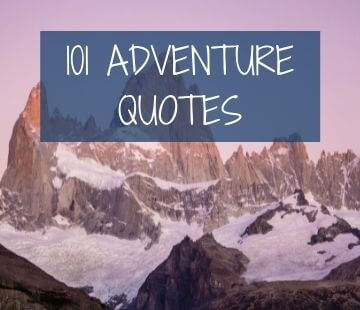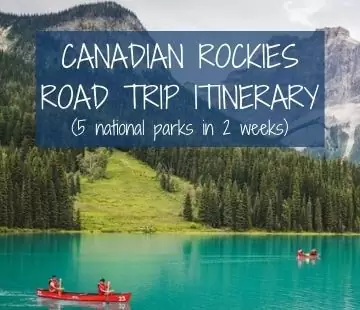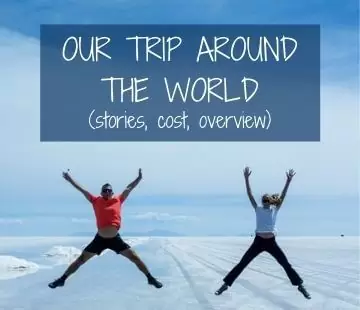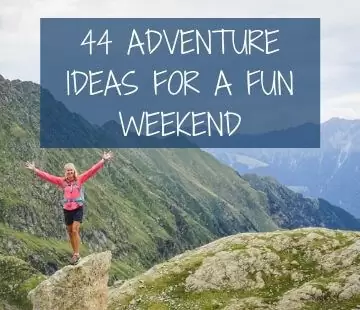Nicaragua is the largest country in Central America and is often overlooked. With the eastern Caribbean side, many volcanoes, lakes and colonial towns on the west side, it’s becoming a popular tourist destination. Learn some interesting facts about Nicaragua, and you will want to plan your visit.
From hiking volcanoes, surfing camps, kayaking on Lake Nicaragua or enjoying the quietness and blue crystal clear waters of the Caribbean Sea, this amazing country is full of surprises.
We spent three weeks in Nicaragua during our trip around the world and fell in love with the country. If you’re interested in travelling to Nicaragua, watch our video below.
In this blog post, you learn 22 fun & interesting facts about Nicaragua. I’m sharing everything I’ve learnt about Nicaragua, our observations and our experience.
Starting with the basics about the country, we move to history & culture and then some fun things I bet you didn’t know about Nicaragua. These facts about Nicaragua educate, make your travel planning easier, or excite you about visiting.
Enjoy!
Interesting facts about Nicaragua: the basics
1. Geography
Nicaragua is the largest country in Central America, with Honduras and Costa Rica as its neighbours. The Pacific side is the most populated and popular for surfing among travellers. On the other hand, Corn Islands on the Caribbean side are white sand and blue water heaven (and probably the most affordable Caribbean destination).
Managua is the largest city and capital and has an international airport – Sandino International Airport. This is where flights to Corn Islands depart.

2. Elevation
Despite Nicaragua having eastern and western sides be the ocean or the sea, the country’s elevation is 298 meters above sea level.
The highest mountain is Pico Mogoton, at 2,107 meters. Travellers who hiked up the mountain suggest doing so with a guide as the trail is often overgrown.
3. Population
The population of Nicaragua is 6,2 million, with 90 % of the population living on the seashore on the west. The most population is mestizos, a combination of European and indigenous people.
The main language is Spanish, with Creole and English prevalent in the Caribbean.

4. Climate
Nicaragua is only 1,350 km north of the equator and has a tropical climate. Year-round temperatures range from 21C at night to 37C during the day (70F to 99F). As it goes with tropical countries, Nicaragua only has two seasons instead of four:
- The wet season from May to October
- The dry season from November to April
While the best time to visit Nicaragua is from November to April during the dry season, we visited in October. I don’t remember any showers, but a lot of humidity.

5. Indigenous name
Nicaragua comes from Nicarao, the indigenous chief of people living around Lake Nicaragua in the 15th & 16th centuries.
6. Forward-thinking country
Nicaragua produced 70% of its power supply from renewable resources in 2020. As the poorest Central American country, it’s way ahead of its peers. As a comparison, the US produces 13% of energy from renewable resources, which hasn’t changed in more than six years.
Moreover, they plan to generate 91% of electricity from renewable resources by 2027. Way to go, Nicaragua!

7. Ring of Fire
Nicaragua belongs to the Ring of Fire, an area in the Pacific Ocean with common earthquakes and volcanic eruptions. The most popular volcanoes among visitors are:
- Active Masaya Volcano in Masaya Volcano National Park, where you can watch the lava flow
- Cerro Negro, the youngest volcano in Central America popular for sandboarding (you can watch us sandboarding in the video above)
- Maderas Volcano and Ometepe Volcano on Ometepe Island for hiking to the top
- Volcano Cosiguina with a picturesque crater lake

READ NEXT
55 amazing pictures to inspire you to visit Nicaragua
Interesting facts about Nicaragua: history & culture
8. Unique history
What separates Nicaragua from the rest of Latin America is that it’s the only country that has been colonized by the Spanish and the British. The west side was occupied by Spain since the 16th century, and the Caribbean side by the British since the 17th century.

9. Independence
Nicaragua gained independence from Spain on September 15, 1821, along with other Central American countries – El Salvador, Honduras, Costa Rica and Guatemala. All countries celebrate independence on the same day.

10. Traditional food
Nicaraguans eat Gallo pinto almost every day. It is rice mixed with black beans. Nicaraguans claim it as traditional Nicaraguan food, but alterations of this tasty side can be found in many Caribbean and South American countries.
11. English speaking community
British ruled over parts of Nicaragua on the Caribbean coast. It got a really wicked name – Mosquito Coast. This part is not very developed, and even the name suggests that it might be hard to live there.
On the other hand, islands off the coast called Corn Islands are developing tourist destinations with turquoise sea and a great place to chill out. All of these regions speak English.

12. Earthquake in 1972
A massive earthquake, only one day before Christmas in 1972, killed over 10,000 people. It happened right outside of the capital of Nicaragua, Managua. Since then, there has been no defined city center of the Nicaraguan capital as people rebuilt the city around the destroyed downtown area.
13. Lake Nicaragua, a competitor to Panama Canal
In the late 19th century, Lake Nicaragua was an alternative place to connect the Atlantic and Pacific oceans instead of the Panama Canal. In 2014, Hong Kong-based company gained a lease to build an alternative to Panama Canal but failed to raise the money. Who knows what will happen in the future.

Interesting facts about Nicaragua for travellers
14. Affordability
Many countries in Central America are affordable tourist destinations and, therefore, heaven for budget backpackers. Due to Nicaragua’s variety of experiences and landscapes, it’s the most popular country for backpackers. Costa Rica, its southern neighbour, is twice as expensive as Nicaragua.

15. Surfing hotspot
Nicaragua is a great place for surfing. On the Pacific coast, you’ll find more than ten great beaches for surfing. Famous surfing spots are San Juan del Sur and Popoyo. Due to an increasing wave of surfers visiting, prices for surf camps are skyrocketing.
To avoid crowds, Nicaragua also has spots where you can have the whole beach to yourself, for example, Jiquilillo Beach in the northern part of Nicaragua.

16. Unique Lake Nicaragua
Lake Nicaragua (also called Lago Cocibolca) covers a significant area of the country. It has some 360 volcanic islands, one of which is the biggest island on the lake, Ometepe Island. The island with two volcanos is a popular tourist destination. Don’t be surprised to see sharks in the lake as they travel from the Caribbean.

17. No tourist visas
Nicaragua issues visas on arrival, but citizens of many countries around the world are only required to buy a Tourist Card for 10 USD upon arrival (Americans, Canadians, and lots of Europeans only need the Tourist Card).
You can travel within Guatemala, El Salvador, Nicaragua and Honduras for up to 90 days since they created a free movement union similar to the European Schengen system.
TIP
Border crossing from El Salvador or Honduras to Nicaragua is popular and well-established, but you can also try the adventurous way with a boat crossing from La Union, El Salvador, to Potosi, Nicaragua, through the former pirate waters.

18. Rainforest
The eastern part of Nicaragua is very little populated and mostly covered by rainforests. Thanks to this, Nicaragua has the highest amount of forests in Central America. Monkeys, toucans, sloths and other animals are commonly seen.

19. No actual address
One of the fun facts about Nicaragua is that they don’t use street names or numbers. If you are looking for a certain place, the direction may look like this: 2 blocks north from the church and 3.5 blocks down the hill. A similar system is in Japan or used to be in South Korea.

20. Saving turtles
Have you ever thought about how turtles lay eggs and how small hatchlings get into the ocean? Nicaragua is one of the best places to see how people try to protect these creatures from extinction.
Two wildlife refuges are La Flor, near San Juan del Sur and Padre Ramos, near Jiquilillo. Visiting the latter gives you the most authentic experience as it is less developed than partying backpacker’s hub San Juan del Sur.

21. Safe and authentic
Nicaragua is the safest country of all Central American countries, as it is not involved in drug trafficking as much as its neighbours. Most Nicaraguans live on less than $2 a day (the 2nd poorest country in North America) and are one of the last Central American countries where you can see locals living their natural non-westernized way of life.

22. Unusual national sport
Who would have guessed that baseball is a national sport in Nicaragua? Most countries of Latin America watch football (soccer in American English), and most famous athletes between Mexico and Chile are usually football players.
Due to British influence in the Caribbean region, some countries are baseball lovers. More importantly, these countries usually beat Americans in their game.

Have you learned something new about Nicaragua? Would you like to visit?
Spread the word! PIN this to your Pinterest board.













The influence of baseball is due to the presence of US Marines in the 20th century, not because of the British. Uh, do the British even play baseball?
Thanks for spotting the error. I’ve edited the article.
Just a little correction on the Rice and Beans, we eat red beans not black, black is done in Costa Rica
Thank you Rodolfo, I’ve corrected the article.